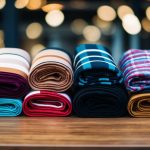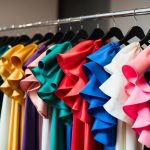
Accessory Integration
Minimalist garments benefit tremendously from the thoughtful integration of key accessories. Items like shoes, bags, jewelry, and other accents enhance the simplicity and sophistication of a versatile outfit. Strategic choices in these elements can transform basic clothing into expressive, efficient ensembles.
Shoes and Bags as Outfit Anchors
Shoes and bags often serve as anchors, adding structure to minimalist outfits. Ankle boots provide a timeless silhouette that complements both casual and formal attire, making them indispensable in a versatile wardrobe. Strappy sandals can add elegance to a summer outfit with their delicate design.
The everyday bag must balance both utility and style. Whether it’s a crossbody or tote, it should be spacious enough for essentials without overpowering the outfit’s simplicity. Bags in neutral tones easily integrate with various outfits, harmonizing with the minimalist theme and providing both function and a touch of sophistication.
Jewelry and Accents
Jewelry introduces subtlety and elegance to minimalist ensembles. Simple pieces like stud earrings or a thin chain necklace can refine an outfit without detracting from its overall simplicity. These accents often showcase personal style while adhering to minimalist aesthetics.
Layering rings or bracelets in similar tones can add interest. Choosing pieces with clean lines and minimal embellishments ensures that they remain versatile. Attention to detail in these elements allows the outfit to remain cohesive and polished, ensuring that the accessories enhance rather than overshadow the garments.
Mindful Clothing Consumption
Mindful clothing consumption embraces sustainable practices and seeks to mitigate the environmental impact of the fashion industry. This approach encourages conscious choices that prioritize quality and longevity over short-lived trends.
Evaluating Fashion’s Environmental Impact
The environmental impact of the fashion industry is significant. It is responsible for a substantial portion of global carbon emissions due to production and transportation. Water usage is another concern, with the industry consuming vast amounts during the textile manufacturing process. Moreover, non-biodegradable waste from synthetic fibers contributes to pollution. Sustainable fashion seeks to address these issues by promoting eco-friendly materials and processes. Brands are encouraged to adopt methods that reduce waste and minimize environmental harm, including water recycling and energy-efficient manufacturing.
The Problem with Fast Fashion
Fast fashion compounds environmental issues through its rapid production cycles and disposable nature. These practices lead to high levels of waste, as garments are often designed for short-term use and quickly discarded. The allure of cheap, trendy clothes contributes to overconsumption, driving demand for mass production. This cycle places significant pressure on natural resources and labor conditions.
Sustainable alternatives advocate for mindful consumption by encouraging consumers to make more informed purchasing decisions. Investing in quality pieces that offer versatility and longevity can reduce the frequency of new purchases. Such practices help decrease the overall demand for fast fashion and its associated environmental toll. By shifting focus towards ethically produced garments, the fashion industry can move towards a more sustainable future.



